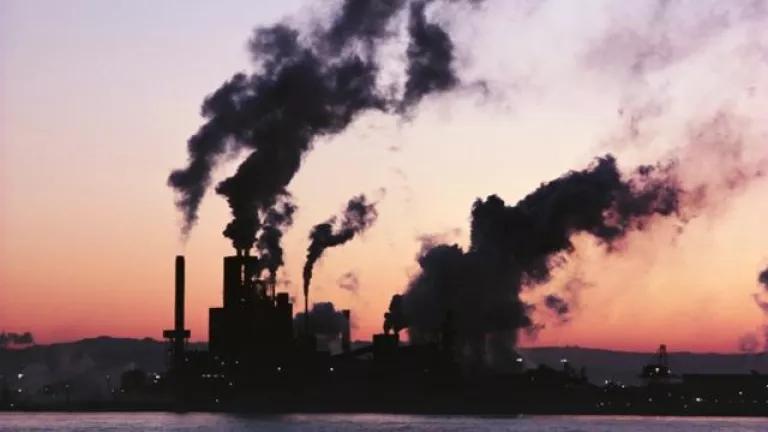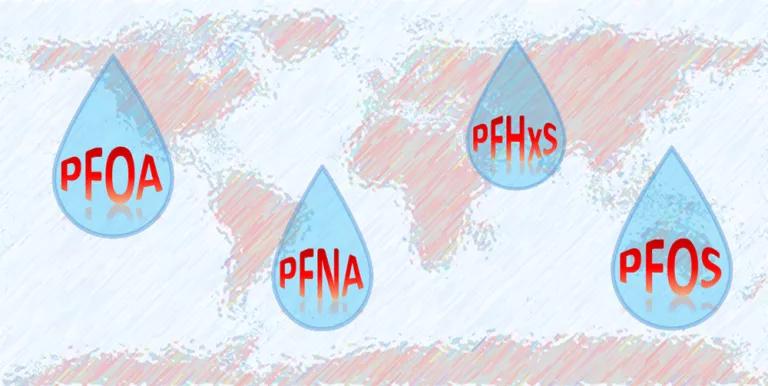PFAS Are Still Forever (and Not Your Best Friend)
Stopping the production, use, and release of PFAS is still the most efficient method to protect the public and environment from PFAS exposure and harm.

If you follow the news on the PFAS crisis, sensational headlines were abundant earlier this month in response to an exciting advance in PFAS destruction research (see here, here, and here, for recent reporting on a study reporting destruction of a select subset of PFAS using a base/DMSO process). Unfortunately most of these headlines were misleading on the imminence of solutions to the PFAS crisis and reflect misconceptions or misunderstandings of the technology and its status.
It is important to evaluate new technologies critically with the full context of the problem in mind as we outline below. And, while evaluating any technology, we have to keep in mind we should stop adding to the problem immediately wherever possible, because PFAS are still forever. A comprehensive, reliable, economical, and easily deployable method for destroying PFAS is not imminent as of now. Stopping the production, use, and release of PFAS is still the most efficient method to protect the public and environment from PFAS exposure and harm.
PFAS, a class of thousands of man made chemicals that are widely used in consumer products and industrial processes, are often referred to as “forever chemicals” because of their extreme persistence and resistance to breakdown. They are known to contaminate our air, water, land, and are found in the bodies of virtually all people living in the US. PFAS are linked to multiple health effects including, cancer, kidney and liver damage, and immune system disruption.
Though efforts are underway to clean up PFAS contamination sites in our environment, we currently lack safe methods to dispose of PFAS waste. Current disposal methods include: 1) incineration, which doesn’t fully destroy PFAS and often results in the release and spreading of airborne PFAS and other toxics near the incineration site; 2) landfilling or deep-well injection, which concentrates PFAS in the ground where they can then leach and seep into groundwater supplies. What is needed is a technology that fully destroys, or “mineralizes” PFAS (breaks apart the carbon-fluorine bonds that give PFAS their durability) so that PFAS waste does not reenter the environment.
Key considerations for evaluating PFAS destruction technologies
The field of PFAS destruction technology is moving rapidly and the above study is just one of many examples of the creative ways in which scientists are trying to tackle this particular problem. As this field moves forward, here are some important questions to ask when evaluating destruction technologies and the impact they could have on addressing the PFAS crisis (some of which we are happy to see are already incorporated into EPA’s PFAS Thermal Treatment Database).
- How broadly does the technology address the PFAS class? Does it destroy the whole class of PFAS or only a subset?
- Which specific PFAS were measured before and after the technology was applied?
- Were non-targeted approaches, such as total organofluorine, also used?
- Were volatile and ultra-short chain PFAS measured?
- What are the full life cycle effects of this destruction technology?
- If the technology was implemented at a large scale facility or in the field, are there any dangers to workers?
- What byproducts are produced by the technology?
- Are other harmful chemistries required/used in this technology?
- How energy and resource intensive is the process?
- How will using this technology affect communities in the vicinity of a facility operating this technology?
- What matrices can the technology address?
- Can the technology be used for contaminated water, soil, sludge, treatment filters, and/or commercial products and stockpiles such as aqueous firefighting foam?
- Does the technology require PFAS to be captured and concentrated first?
- Can the technology be deployed on-site or does it require transport to a facility?
- How far is the technology from deployment in the field?
- Has this technology been tried at the laboratory scale only or also in the field? What further steps remain? What is the lead time to commercialize the technology?
- How do the performance and life cycle effects differ when the technology is applied at different scales?
- Has a third party validated the technology’s performance and safety?
These questions are necessary for characterizing the utility of new destruction technologies. Ideally, they should fully destroy all PFAS, including ultra-short chain and volatile ones and polymers. When destruction technologies cannot destroy all PFAS, the limitations of the technology should be made transparent (by scientists, agencies, and news media) - and it is important that any remaining PFAS are accounted for and prevented from reentering the environment. The full life cycle effects of a technology should be investigated and made transparent as well. For example, other chemicals that are used or created during the destruction process should be identified and their potential for ecosystem and health harms acknowledged and mitigated.
Applying these key considerations to the latest PFAS destruction technology
These questions can be used to evaluate the potential of the new technology (base/DMSO process) that generated all the headlines earlier this month, and to put its media coverage into better perspective. From a scientific standpoint, a novel breakdown pathway of select PFAS was demonstrated. The technology also shows potential for PFAS destruction at much lower temperatures than required with incineration.
- But how broadly does the technology address the PFAS class? Currently, the method only addresses a select subset of PFAS - the perfluorocarboxylic acids, like PFOA, and perfluoro ether carboxylic acids, like GenX - though study authors suggest that future modifications to the technology may increase the breadth of PFAS destroyed with this method.
- What about lifecycle effects? An intermediate byproduct of the technology is an ultra-short chain PFAS called trifluoroacetic acid (TFA) that is toxic and already accumulating in the environment from other industrial activities (though running the reaction for long periods of time, e.g., over 300 hours mitigates the generation of TFA.) It also requires the use of a highly toxic industrial solvent, DMSO, at eight times the volume of PFAS-containing water to be treated. As a prominent green chemist, Terry Collins, recently commented, “...the base/DMSO process is not a nice one, and I wouldn’t want to live anywhere near it.” Thus, it will be important for scientists and engineers to incorporate mitigation measures to address these concerning lifecycle effects.
- What matrices can this technology address? The technology was demonstrated in an aqueous solution and the authors did not speculate on the applicability to other matrices. As currently described, this technology requires PFAS to be collected and concentrated prior to the destruction process.
- How far is the technology from field deployment? Great ideas begin in the laboratory, but significant work is needed to ensure that what works in the laboratory can also work in the field and at a much larger scale. This technology has only been demonstrated in a laboratory setting.
Thus, while this new base/DMSO process is an exciting step forward, it is not the magic wand some of the media reports made it out to be. In fact, the framing of this as a “powerful solution” to the PFAS problem, could prove detrimental to addressing PFAS by giving PFAS manufacturers and other responsible entities a “free pass” to continue polluting - ultimately delaying much needed health protections. Due to their persistence, mobility, and widespread use for decades, PFAS already contaminate every aspect of our environment - the air, water, and soil - and our own bodies. Once released into the environment, PFAS are costly and energy intensive to clean up, and these efforts cannot fully reverse the damage inflicted on public health and the environment. An alarming report laid out the evidence that contamination of 4 PFAS has already exceeded the planetary boundary, meaning that the levels of contamination have exceeded a “safe operating space for humanity.”

Outside the Safe Operating Space of a New Planetary Boundary for Per- and Polyfluoroalkyl Substances (PFAS)
There’s no doubt that effective destruction techniques are sorely needed, but on their own, they will not solve the PFAS crisis. Destruction is only one piece in a comprehensive approach to addressing the PFAS crisis. As detailed further in the policy recommendations section of this report (specific to California, but globally applicable), there are several key actions that must be pursued in parallel:
- Stop adding to the problem - The most efficient method to protect the public and environment from PFAS exposure and harm is to stop the production and use of PFAS wherever possible.
- Expand monitoring - Testing is needed in more locations and for a wider array of PFAS to better understand the total PFAS burden communities face.
- Address PFAS contamination - Although it is impossible to collect all PFAS in our environment, to protect public health it is critical to treat major exposure routes, such as drinking water, as quickly and thoroughly as feasible.
- Ensure safe disposal of waste - Highly contaminated waste should be stored until a safe destruction method is developed, scaled up and validated for performance and safety by a third party.
- Hold polluters accountable - Federal, state and local entities should work to ensure that those responsible for polluting our environment and our bodies with PFAS should also shoulder a fair share of the costs.





